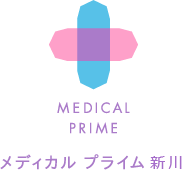Influenza – timing of testing and types of treatment drugs
2023.12.01
For the past few years, it has been hidden in the shadow of the new coronavirus, but this
winter, influenza is prevalent.
If you get a fever or a sore throat this winter, you might wonder if it’s the flu. However, have
you ever had the experience of going for a test right away and not being clearly diagnosed?
We will introduce you to when the best time is to get tested, and what treatments are
available for influenza.
Influenza epidemic status
In order to ascertain the number of influenza patients, approximately 5,000 pediatric and
internal medicine departments across the country report the number of patients who visit
their medical institutions on a weekly basis.
According to the “Influenza Information” released by the Tokyo Metropolitan Government, as
shown in the graph below, the influenza epidemic has already begun, and the number of
cases reported per designated hospital has increased earlier than usual.

When should I get tested for influenza?
If you develop symptoms such as a fever and wonder if you have the flu, we recommend
that you visit a clinic and get tested within 12 to 48 hours of the onset of symptoms.
This is because, even if the currently widely distributed influenza test kits are highly
accurate, they cannot make a correct diagnosis unless the amount of virus increases to
some extent. Therefore, it is best to wait 12 hours after the onset of symptoms to make a
correct diagnosis.
On the other hand, the reason for “within 48 hours” is that anti-influenza drugs can be
expected to be effective if they are started within 48 hours of the onset of symptoms. On the
other hand, there is almost no therapeutic effect if you start taking the drug more than 48
hours later.
Difference between “infection” and “onset”
By the way, even if you are told “within 12 to 48 hours of onset,” it may be difficult to
understand when onset occurs.
Onset is the appearance of symptoms of a disease.
By the way, infection is when a pathogen such as a virus enters the body and multiplies.
Symptoms generally don’t develop immediately after infection; there is usually an incubation
period of 1 to 3 days before symptoms develop.
The onset of symptoms is when symptoms such as fever, cough, sore throat, and fatigue
appear. Even so, it may be difficult to know exactly when, so I think it’s easiest to get a
correct diagnosis if you aim for about 24 hours after you think you’ve developed symptoms.
However, if you have symptoms of dehydration, severe body pain, or severe symptoms, do
not hesitate to seek medical attention immediately.
5 types of anti-influenza drugs
Currently, there are five types of anti-influenza drugs mainly used:
It is said that taking these drugs shortens the fever period by about 1 day.
●“Tamiflu (generic name: oseltamivir)”
It is in capsule form. For adults, take 1 capsule at a time, twice a day, for 5 days.
Tamiflu is the drug with the most clinical history as a treatment for influenza.
●“Relenza (generic name: zanamivir)”
This is an inhaler.
Adults and children should take it twice a day for 5 days using a special inhaler.
As it is an inhaler, it delivers the medicine directly to the respiratory tract and suppresses the
proliferation of the virus in the upper respiratory tract (from the nose to the throat). However,
people with respiratory illnesses such as asthma should be careful as it may trigger an
attack.
●“Inavir (generic name: laninamivir)”
This is also an inhaler. If it can be meticulously inhaled, the treatment can be completed with
just one inhalation. In addition to the powder type, there are also types that are inhaled using
a nebulizer inhaler. However, like Relenza, people with respiratory problems need to be
careful.
●“Rapiacta (generic name: peramivir)”
It’s an intravenous drug. A single infusion is said to be as effective as taking Tamiflu orally for
5 days.
It is used for patients who have difficulty taking the drug orally, for those who have difficulty
digesting medication due to vomiting or diarrhea, and for those who require hospitalization.
●“Xofluza (generic name: Baloxavir)”
It is a new anti-influenza drug that was released in tablet form in 2018.
Although it suppresses the proliferation of influenza viruses in the same way as other drugs,
its mechanism of action is different, and treatment can be completed with just one dose.
However, there is the problem of “resistant viruses” that make drugs less effective, and
children under the age of 12 are particularly susceptible to developing drug resistance. For
children aged 11 and over, the advice is to “judge carefully”.
◎Reference
Tokyo Infectious Disease Information Center “Tokyo Influenza Information” published
November 24, 2023
https://idsc.tmiph.metro.tokyo.lg.jp/assets/flu/2023/Vol26No11.pdf
Japanese Academy of Pediatrics “2023/24 Season Influenza Treatment and Prevention
Guidelines”
https://www.jpeds.or.jp/uploads/files/20231122_influenza.pdf

